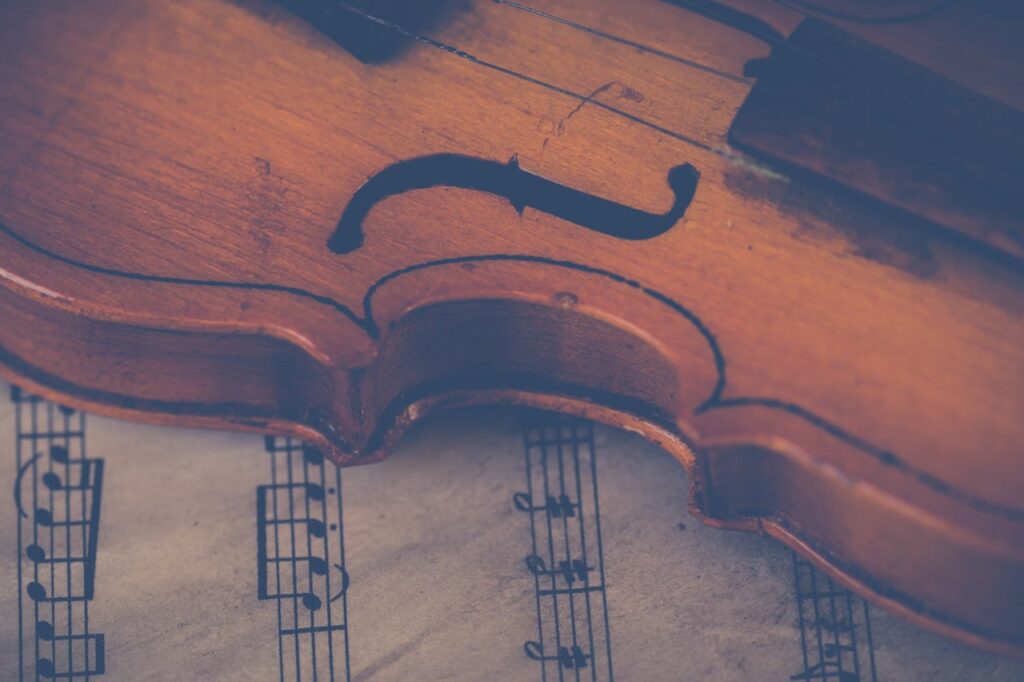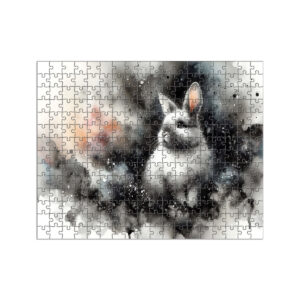Musical instruments have been central to human culture and expression for centuries, and understanding the science behind their sound production unveils the intricate artistry and engineering that make music possible. From the strings of a piano to the reeds of a saxophone, each instrument has a unique mechanism that transforms simple physical processes into complex and beautiful soundscapes. In this article, we’ll delve into the science of various instruments, examining how they produce sound and how their design influences their tonal qualities.
String Instruments: Mechanics and Vibrations
The Piano: A Complex Stringed Mechanism
The piano is a marvel of mechanical engineering, combining the simplicity of string vibration with complex mechanics. When a key is pressed, a hammer inside the piano strikes a set of strings. These strings are tightly wound around a metal frame, creating vibrations that produce sound. The soundboard, a large wooden panel beneath the strings, amplifies these vibrations, turning them into the rich, resonant tones we associate with the piano. This amplification is crucial for producing the full spectrum of sound that the piano is known for.
The Guitar: From Acoustic to Electric
Guitars are versatile instruments with distinct sound production methods depending on their type. Acoustic guitars produce sound through the vibration of strings, which are transmitted to the hollow body of the instrument. This body acts as a resonating chamber, amplifying the sound. On the other hand, electric guitars rely on electromagnetic pickups to convert string vibrations into electrical signals, which are then amplified electronically. The body of an electric guitar is typically solid, and its sound is shaped by various electronic components, making it ideal for genres like rock and jazz.
The Violin: Crafting Rich Tones
The violin, a cornerstone of classical music, produces sound through a combination of string vibration and the bowing technique. The violin’s strings are vibrated by drawing a bow, strung with horsehair, across them. The resonating body of the violin, which includes the soundbox and f-holes, amplifies these vibrations. The cello, a larger relative of the violin, operates on similar principles but with a larger body that produces deeper, more resonant tones.
Other String Instruments: Harp, Mandolin, and Banjo
The harp’s strings are stretched across a large frame, and the sound is produced by plucking these strings. The tension and length of each string determine the pitch. The mandolin, with its round body and eight strings, produces a bright, chime-like sound through rapid plucking. The banjo, with its drum-like body and five strings, offers a distinct, lively tone used frequently in bluegrass and folk music. The lute, an ancient string instrument, has a pear-shaped body and provides a soft, melodious tone.
Woodwind Instruments: Air Flow and Reed Systems
The Flute: Air Across Open Holes
The flute produces sound by blowing air across an open hole, creating a vibration in the column of air inside. The pitch is altered by covering different holes along the flute’s body. The piccolo, a smaller version of the flute, produces higher pitches due to its reduced size and shortened air column. Both instruments rely on precise air control and finger positioning to produce their characteristic sounds.
The Clarinet and Oboe: The Reed’s Role
Clarinets use a single reed attached to the mouthpiece to create sound. As air flows through the reed, it vibrates, creating sound waves in the instrument’s cylindrical body. The clarinet’s tone is warm and versatile, making it suitable for various music genres. In contrast, the oboe uses a double reed, which consists of two reeds bound together. The air vibrates between the reeds, producing a distinctive, piercing tone. The oboe’s conical shape further shapes its sound, giving it a unique voice among woodwinds.
The Saxophone: A Modern Woodwind Innovation
The saxophone, with its metal body and single reed, blends characteristics of both brass and woodwind instruments. The metal body gives it a bright, bold sound, while the reed system allows for expressive tonal variations. Its versatility makes it a staple in jazz and contemporary music. The saxophone’s sound is shaped by its keys and the player’s embouchure, providing a wide range of expressive possibilities.
Specialty Woodwinds: Bassoon, Bass Clarinet, and Harmonica
The bassoon, with its long, folded body and double reed, produces a deep, rich sound. Its unique shape allows for complex fingerings and a wide range of notes. The bass clarinet, similar to the bassoon but with a single reed, offers a lower pitch and a warm, mellow tone. The harmonica, a small, hand-held instrument, uses reeds to produce sound. By blowing and drawing air through different chambers, players create a variety of sounds and effects, making the harmonica a versatile instrument in both blues and folk music.
Brass Instruments: Resonance and Valves
The Trumpet: Bright and Bold
The trumpet produces its bright, penetrating sound through the vibration of lips against a metal mouthpiece. The instrument’s valves change the length of the tubing, allowing for different pitches. The shape of the bell further influences the sound’s projection and timbre. The cornet, similar in function but with a more compact shape, offers a slightly warmer tone compared to the trumpet.
The Trombone: Sliding into Tones
The trombone stands out among brass instruments due to its slide mechanism. Instead of valves, the slide allows players to change the length of the instrument’s tubing, thus altering the pitch. This slide mechanism enables smooth, gliding transitions between notes, giving the trombone its distinctive sound. The French horn, with its coiled tubing and valves, produces a mellow tone and is known for its complex fingering and rich harmonics.
The Tuba and Sousaphone: Deep and Resonant
The tuba, the largest brass instrument, produces deep, resonant sounds due to its extensive tubing and large bell. Its role in orchestras and bands is to provide the bass foundation. The sousaphone, a variation of the tuba, features a coiled design that makes it easier to carry during marching performances. Its broad, deep tones contribute to the rich sound of marching bands.
Other Brass Instruments: Cornet and French Horn
The cornet, similar to the trumpet but with a more rounded shape, produces a softer, mellower tone. The French horn, with its complex tubing and circular shape, is known for its rich, warm sound and its role in both orchestral and solo performances. The French horn’s unique design allows for a wide range of tonal expressions.
Percussion Instruments: Impact and Resonance
The Drum: Fundamental to Rhythm
Drums are foundational to rhythm in music. They produce sound by striking a drumhead, which is stretched over a hollow shell. The type of drumhead and the shell material significantly impact the drum’s tone. Drums like the snare, with its sharp, crisp sound, and the bass drum, with its deep, resonant tone, each play a unique role in creating rhythmic patterns and dynamics in music.
Timpani: Tuned Percussion
Timpani, or kettle drums, are tuned percussion instruments that can be adjusted to specific pitches using tension screws. Their ability to produce distinct pitches allows them to play melodic lines and harmonies within orchestral music. Timpani’s resonant tones and ability to sustain notes make them essential in classical compositions.
Marimba and Xylophone: Wooden Bars and Resonators
The marimba and xylophone are both percussion instruments with wooden bars. The marimba’s bars are larger and often paired with resonators to enhance its warm, resonant sound. The xylophone’s bars are shorter and produce a sharper, more piercing tone. Both instruments use mallets to strike the bars, creating a rich array of tones and dynamics.
Specialty Percussion: Castanets, Glockenspiel, and Tabla
Castanets, small handheld instruments, are used in Spanish and Latin music. They produce sharp, rhythmic clicks when struck together. The glockenspiel, with its metal bars and resonators, creates bright, bell-like sounds. The tabla, a traditional Indian percussion instrument, consists of two hand-played drums and produces a wide range of rhythmic patterns and tones.
Electronic Instruments: Innovation in Sound
The Synthesizer: Crafting New Sounds
Synthesizers represent a leap in musical technology, allowing musicians to generate and manipulate sounds electronically. By using oscillators and filters, synthesizers can create a wide range of tones, from imitating traditional instruments to producing entirely new soundscapes. Synthesizers have become integral in modern music production, shaping genres from electronic dance music to ambient soundtracks.
The Accordion: A Hybrid Instrument
The accordion, with its bellows and keys, combines elements of both wind and keyboard instruments. Air is pushed through reeds inside the instrument, creating sound, while keys or buttons control the pitch. The accordion’s unique sound and versatility make it a staple in folk and traditional music across various cultures.
Specialty Instruments: Unique Sound Production
The Bagpipes: Air Pressure and Pipes
Bagpipes use a combination of air pressure and pipes to produce their distinctive sound. Air is stored in a bag and forced through reeds located in the pipes, creating a continuous, drone-like sound. The bagpipes are known for their unique timbre and are often used in traditional Scottish and Irish music.
The Zither and Ocarina: Ancient Traditions
The zither, with its strings stretched across a flat body, is played by plucking or strumming, producing a resonant, melodic sound. The ocarina, an ancient wind instrument with a rounded shape, creates sound through blowing air into its body. Both instruments have historical significance and contribute unique sounds to their respective musical traditions.



















